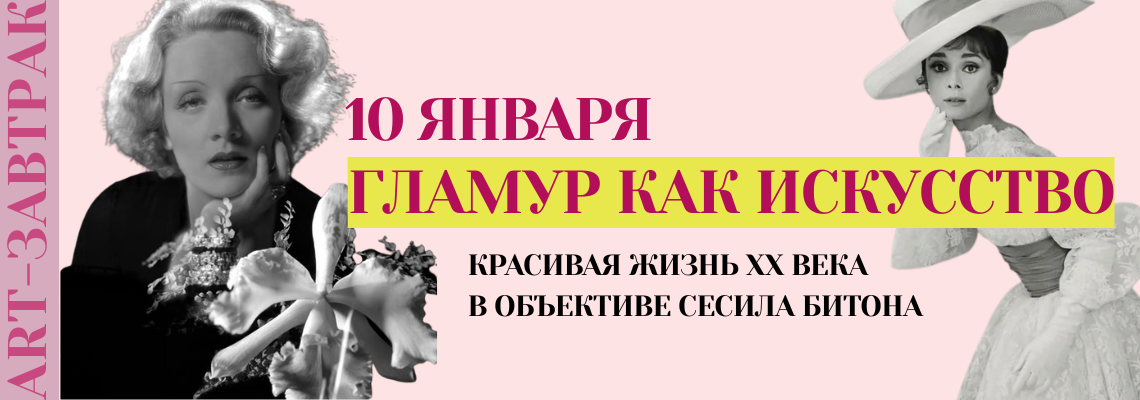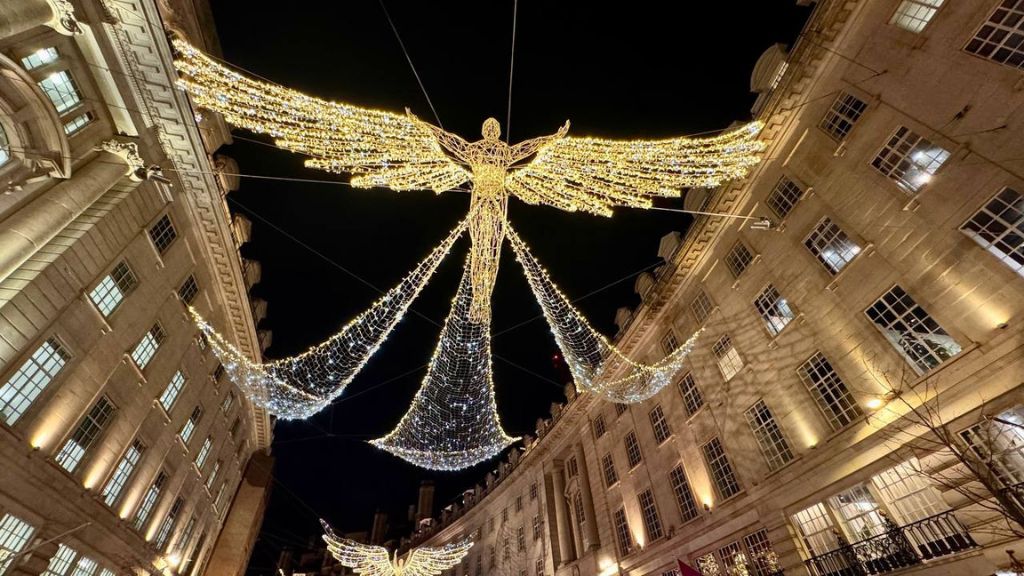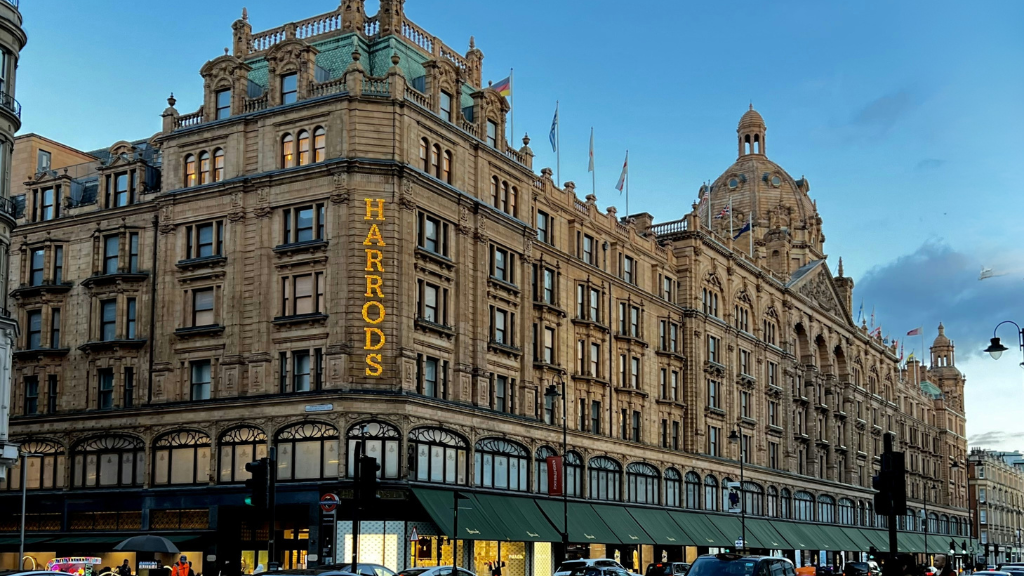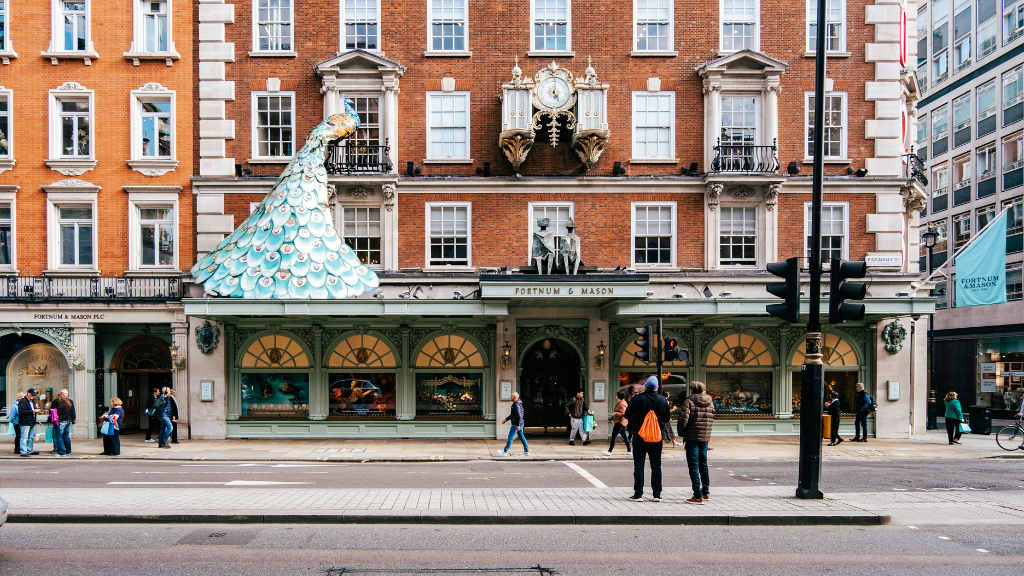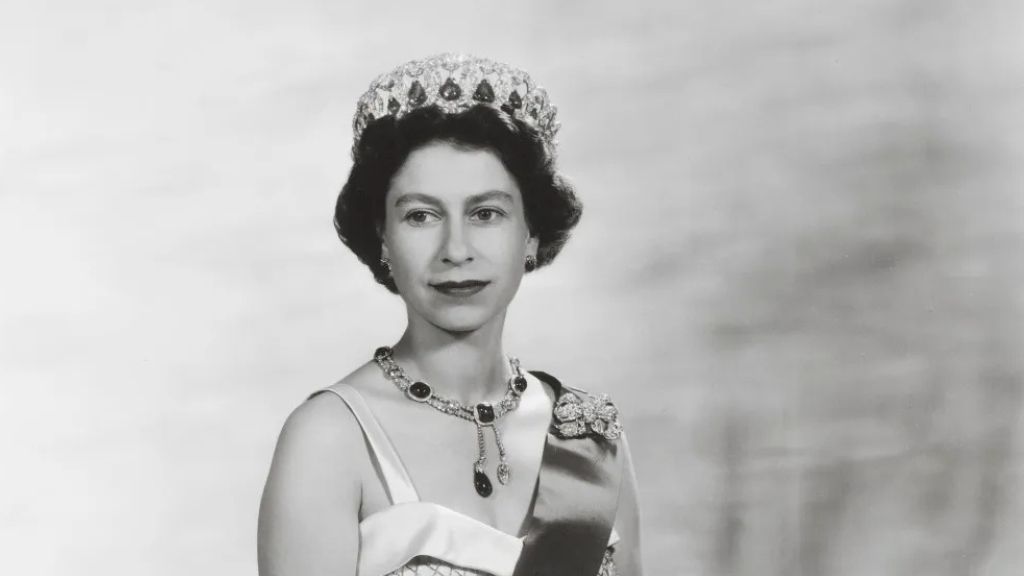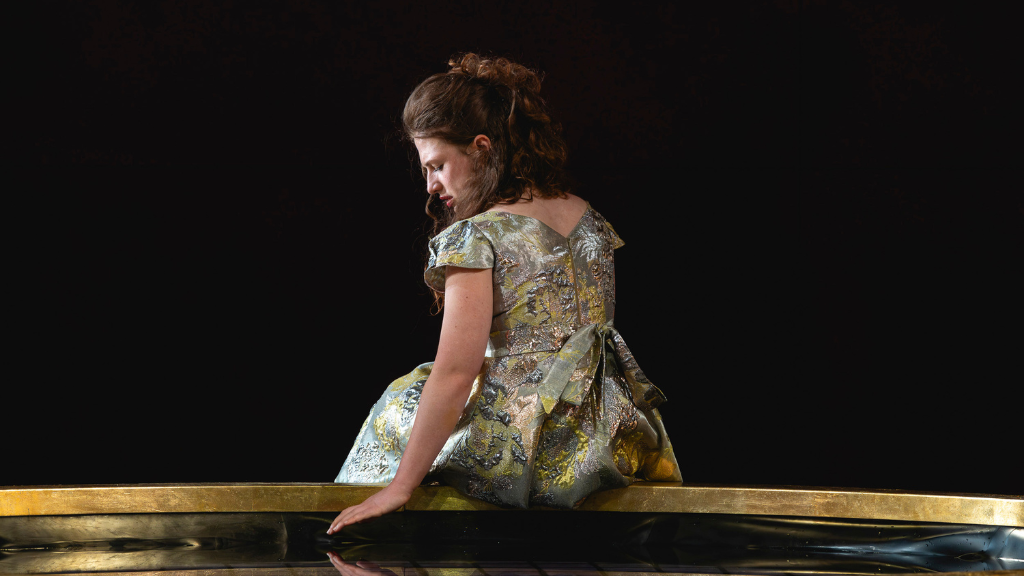
Salome by Maxim Didenko: between faith and flesh
Maxim Didenko’s Salome — a provocative new production by Israel’s Gesher Theatre — is now running in London until 11 October, and it has already split audiences into two opposing camps. Some call it a masterpiece of modern theatre, others find it unsettling and extreme. Afisha.London editorial team attended the performance and recommends seeing it for yourself — to decide where you stand. Our cultural columnist Natalia Rubtsova shares her impressions.
This article is also available in Russian here
Maxim Didenko’s Salome weaves a tense and intricate dialogue between two powerful traditions: the biblical parable and Oscar Wilde’s fin-de-siècle drama. The director manages to hold both in balance — between the canonical source, where Salome is a voiceless shadow, and Wilde’s version, in which she becomes the embodiment of desire and destruction.
The story in both versions is largely the same, with one crucial distinction. King Herod, who has taken his brother’s wife Herodias, lives with her in sin — something the prophet Jokanaan (John the Baptist) never ceases to condemn. In their palace lives Herodias’s daughter, Salome. Having once heard the prophet’s voice, she insists on seeing him and is seized by a fierce, uncontrollable passion. Jokanaan rejects her advances. Herod himself, meanwhile, is consumed by lust for his stepdaughter. When he asks her to dance for him, he swears to grant her any wish. Salome performs the infamous “dance of the seven veils”, stripping away every layer until Herod is utterly undone — and then demands, as her reward, the head of the prophet on a silver platter. The king agonises over her request, but bound by his oath, he grants it — and, overcome by horror, orders Salome to be killed as well.
Read also: The London Christmas Guide 2025: shows, skating and sparkling nights
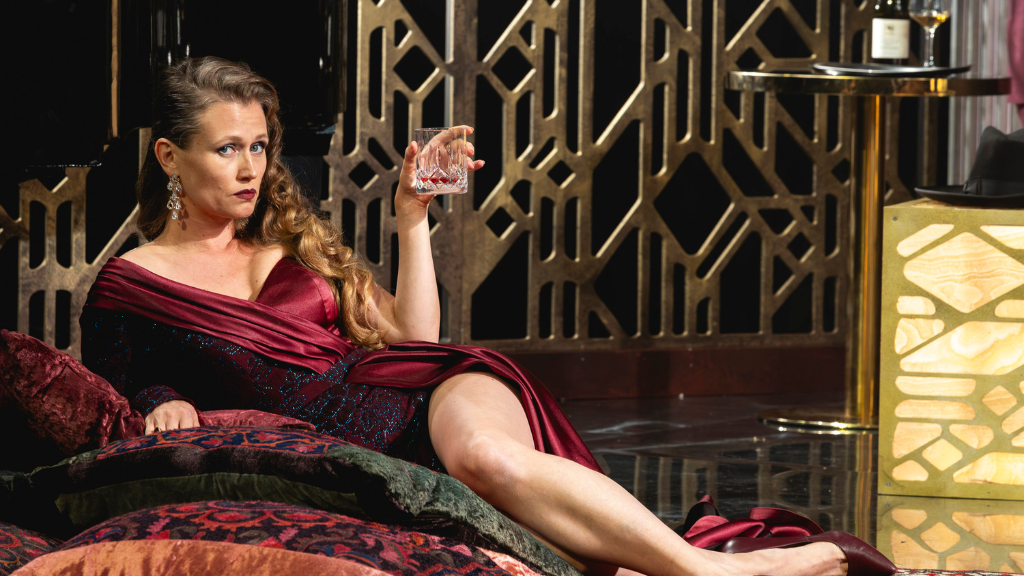
Photo: Isaiah Fainberg
In the biblical story, Salome (Neta Roth) is innocent, an instrument of her mother’s vengeance. Herodias (Doron Tavori), furious at the prophet’s public condemnation, instructs her daughter to demand his head. In Wilde’s play, however, Salome is no longer a vessel but the very source of sin and desire. She does not act for her mother’s sake but for her own — spurned by Jokanaan, she burns with the reckless, vindictive rage of both a petulant adolescent and a humiliated woman.
Invalid slider ID or alias.
Didenko follows Wilde’s text closely. His Salome is the seductress of both Jokanaan and Herod — the silver serpent that slithers across the stage is a clear symbol of the Fall. “Yet I still love thee, Jokanaan. Thee alone. I crave thy beauty… I was a virgin, and thou didst take my virginity. I was chaste, and thou hast kindled a fire in my veins.” Salome here is not the victim but the subject of desire. Rejected by the prophet, she seeks possession of his body — if not in life, then in death. Yet she remains, at the same time, a capricious, spoiled teenager defying both mother and stepfather, driven by a single obsessive impulse: I want.
Wearing a serpent-like mask, Salome begins her dance of the seven veils. Didenko transforms this climactic scene into the key to the entire performance. Her passion is not elevated but fallen, carnal. The dance is awkward, puppet-like — stripped of exotic seduction. It is not the dance of a temptress but the erratic movement of a broken doll. Here, Didenko and the choreographer deserve particular praise: we realise that it is not Salome’s body that seduces, but Herod’s gaze — his sinful imagination projecting desire onto her. Unlike in the Gospel, where the dance is an act of temptation, in Didenko’s reading it becomes a scene of tragic misunderstanding (and no wonder Herod is shattered by her later request).
Read also: National Gallery vs Tate: a new chapter in Britain’s cultural rivalry. Experts’ view.
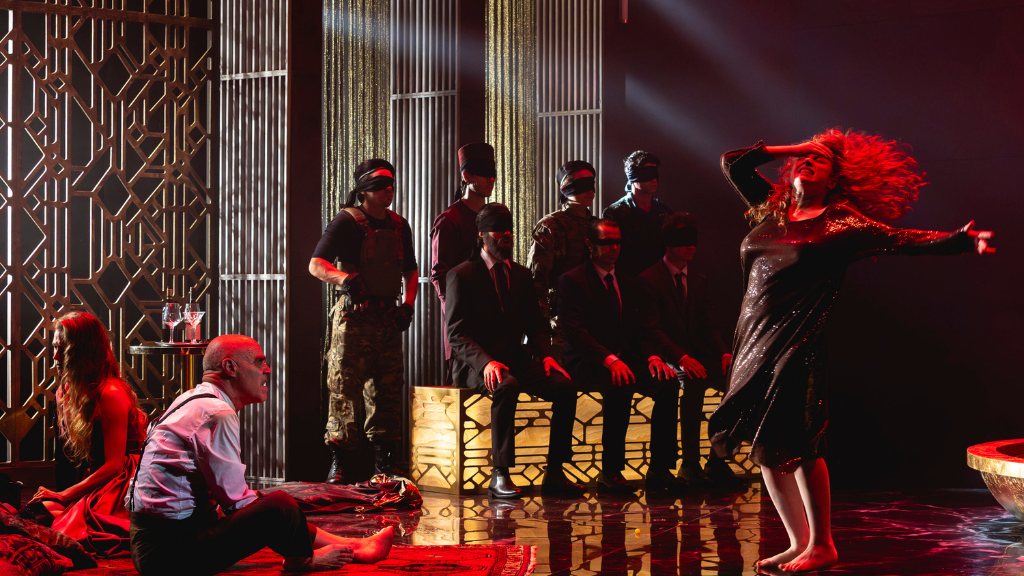
Photo: Isaiah Fainberg
Herodias remains an ambiguous figure. At first, she tries to protect her daughter — warning Herod, “Do not look at her” — but prohibition, as we know, only fuels desire. During the dance, she and Herod are the only ones without blindfolds. On countless canvases depicting this story, Salome is shown as irresistibly sensual; Didenko reverses this by ordering everyone present to cover their eyes. No one should see the dance. Herod stares; Herodias turns away — unable to look. Perhaps she fears losing her place as wife, knowing Herod would easily trade her for the girl he promised half his kingdom. It’s hard to believe her reaction stems purely from maternal concern; she can no longer protect her child. Yet when Salome demands the prophet’s head, we hear in Herodias’s voice a flash of triumph — it was Jokanaan who shamed her, and her daughter’s vengeance becomes, at that moment, her own.
Jokanaan himself commands the audience’s deepest attention. His voice, said in the play to come from the depths of a cistern, seems to rise here from another dimension. Actor Shir Sayag’s performance is extraordinary — a voice of power and softness intertwined, impossible to ignore. In Didenko’s staging, Jokanaan is more than human: he is a cosmic force, a living sign of the other world.
The ending comes swiftly, almost inevitably. Salome cradles the severed head and whispers: “Hadst thou looked at me, thou wouldst have loved me — for the mystery of love is greater than the mystery of death.” This echo of Wilde’s text places her at the very centre of the myth: no longer a mute girl, but a tragic heroine devoured by her own desire. Seeing her kiss the prophet’s dead lips, Herod commands her execution.
Read also: London’s Custom House to be reborn as hotel and cultural venue
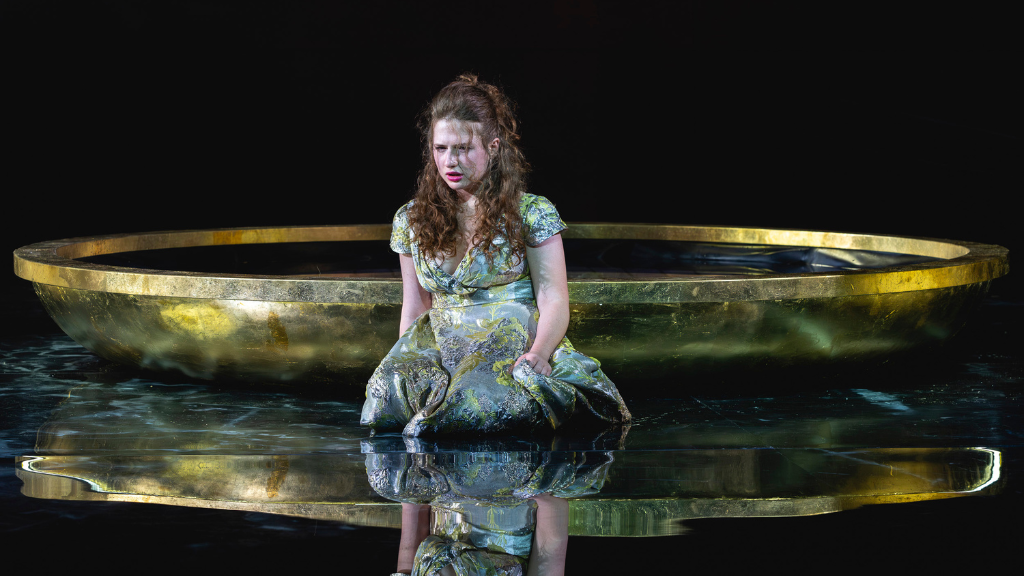
Photo: Isaiah Fainberg
Didenko thus turns both the biblical parable and Wilde’s decadent drama into a hybrid spectacle where faith and temptation, holiness and sin, converge. The prophet’s voice, the serpent’s symbol, and Salome’s broken dance form a world vibrating between spiritual and carnal, echoing not only the Gospel but also our contemporary unease — the fragility of belief before desire, the ease with which the sacred yields to the flesh.
It’s difficult to compare this Gesher Theatre production to, say, Roman Viktyuk’s flamboyant Salome — where Wilde himself appeared as a character and Salome was a beautiful young man — or to Strauss’s operatic visions. Didenko’s Salome feels of this moment: a reminder that the age of decadence and death is, perhaps, once again upon us — and that its questions remain painfully alive.
Maxim Didenko’s Salome is running in London until 11 October. Tickets and details.
Cover photo: Isaiah Fainberg
Read also:
London’s Design Museum plans major transformation for its 40th anniversary
ZooTown: a new adventure for children at London Zoo
London airports ranked: City praised for service, Gatwick hit by delays
SUBSCRIBE
Receive our digest once a week with quality Russian events and articles



